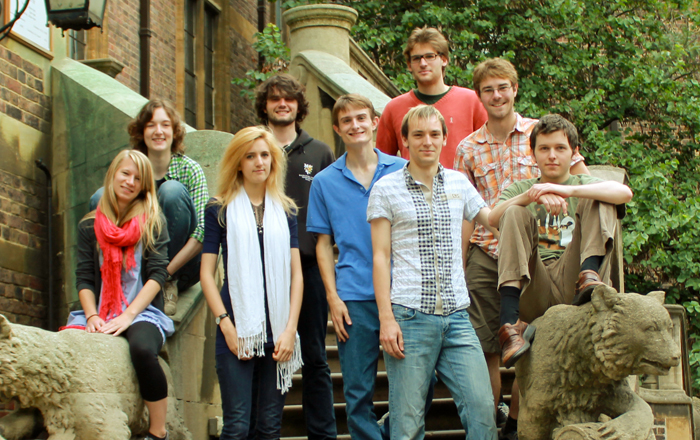Team:Cambridge
From 2010.igem.org

We placed genes from fireflies and bioluminescent bacteria into E.coli. Codon optimisation and single amino acid mutagenesis allowed us to generate bright light output in a range of different colours. Future applications include and quantitative biosensors and biological alternatives to conventional lighting.
If you want a break from hard-core science, check out our Gibson Assembly music video.
You can also see view videos of our bacterial bubble lamp and project overview.

The Cambridge iGEM team has designed a series of systems that will allow synthetic biologists to better employ light in the projects they undertake. We have built a range of bricks to allow bioluminescence which we believe have potential applications both as reporters for biosensors and as natural light sources.
Project Firefly
Over the course of the summer we have built a number of BioBricks to allow bioluminescence.We adopted a number of strategies to extend the use of firefly luciferase:
- Codon optimisation for increased light output
- Use of a luciferin regenerating enzyme.
- Mutagenesis to create a number of different colours
Project Vibrio
We complemented these firefly systems, which require the addition of the substrate luciferin, with light producing systems from Vibrio fischeri. We believe we have created the first BioBrick to emit light in normal E. coli strains without the addition of any external substrate.Tools
Over the summer we made extensive use of Gibson Assembly to manufacture our parts, and have submitted an RFC to the [http://bbf.openwetware.org/ BioBricks Foundation] to help future teams make best use of this technique.
Along with this, we also constructed a number of tools to assist the synthetic biologists of the future:
- Gibthon Construct Designer allows the user to enter a series of BioBrick or GenBank IDs in a specific order and computes the appropriate primers for Gibson Assembly.
- BioBrick → GenBank allows parts from the registry to be downloaded in .gb format, making them compatible with a wide range of biological software.
- The Ligation Calculator is a small calculator to help you work out the proportions to use for ligation in BioBrick assembly without having to worry about units.
- The E.glometer is a cheap, easily built, piece of electronics for measuring bioluminescence. It allows scientists without access to expensive plate readers to measure bacterial light output and has potential applications in quantitative biosensors.
 "
"
